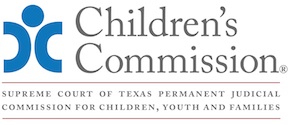F. Mandatory Actions, Findings, and Considerations
1. Place/Return Child
Determine whether to return the child to the child’s parents if the child’s parents are willing and able to provide the child with a safe environment and the return of the child is in the child’s best interest. Tex. Fam. Code§ 263.306(a-1)(5).
OR
Estimate a likely date by which the child may be returned to and safely maintained in the child’s home, placed for adoption, or placed in permanent managing conservatorship. Tex. Fam. Code§ 263.306(a-1)(6).
2. Review Extent of Parent’s Compliance With Temporary Orders and the Service Plan
Review the extent of the parent’s compliance with temporary orders and the service plan and the extent to which progress has been made toward alleviating or mitigating the causes necessitating the placement of the child in foster care. Tex. Fam. Code § 263.306(a-1)(3).
3. Review Permanency Progress Report
Review the permanency progress report to determine:
• The safety and well-being of the child and whether the child’s needs, including any medical or special needs, are being adequately addressed;
• The continuing necessity and appropriateness of the placement of the child, including with respect to a child who has been placed outside of this state, whether the placement continues to be in the best interest of the child;
• The appropriateness of the primary and alternative permanency goals for the child developed in accordance with department rule and whether DFPS has made reasonable efforts to finalize the permanency plan, including the concurrent permanency goals, in effect for the child;
• Whether the child has been provided the opportunity, in a developmentally appropriate manner, to express the child’s opinion on any medical care provided;
• For a child receiving psychotropic medication, whether the child:
◦ has been provided appropriate nonpharmacological interventions, therapies, or strategies to meet the child’s needs; or
◦ has been seen by the prescribing physician, physician assistant, or advanced practice nurse at least once every 90 days;
• Whether an education decision-maker for the child has been identified, the child’s education needs and goals have been identified and addressed, and there have been major changes in the child’s school performance or there have been serious disciplinary events;
• For a child 14 years of age or older, whether services that are needed to assist the child in transitioning from substitute care to independent living are available in the child’s community; and
• For a child whose permanency goal is APPLA:
◦ the desired permanency outcome for the child, by asking the child; and
◦ whether, as of the date of the hearing, another planning permanent living arrangement is the best permanency plan for the child and, if so, provide compelling reasons why it continues to not be in the best interest of the child to:
▪ return home;
▪ be placed for adoption;
▪ be placed with a legal guardian; or
▪ be placed with a fit and willing relative. Tex. Fam. Code § 263.306(a-1)(4).
4. Inquire About Child and Family’s Native American Heritage
The court shall ask all parties present whether the child or the child’s family has a Native American heritage and identify any Native American tribe with which the child may be associated. Tex. Fam. Code § 263.306. For more information regarding requirements when a child has a Native American heritage, please see the Bench Book chapter on the Indian Child Welfare Act.
5. Determine Date of Dismissal
Announce in open court the dismissal date and the date of any upcoming hearings. Tex. Fam. Code § 263.306(a-1)(7).
6. Set Final Hearing
The court shall set a final hearing on a date that allows the court to render a final order before the date for dismissal of the suit. Tex. Fam. Code § 263.304(b).
A party to the suit or an attorney ad litem for the child may seek a writ of mandamus to compel the court to comply with the duties imposed by this subsection. Tex. Fam. Code § 263.304(b).
